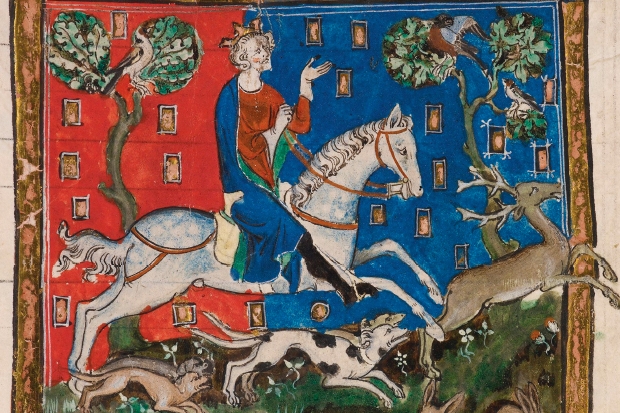Most people know more about the 12th century than they think they do. This is, as Richard Huscroft reminds us in his lively new history, because it is a story often told. Stephen and Matilda. Thomas Becket’s murder. Richard the Lionheart. Bad King John and Magna Carta. These are the familiar friends of Sellar and Yeatman’s ‘guide to all the history you can remember’. Huscroft sets out to find a new way in to this history through its oft-forgotten supporting cast — the men and women caught up in the political eddies caused by the great — and gives us ten tales from an assortment of princesses, adventurers, clerics and exiles.
The long 12th century started in 1066 with the Battle of Hastings and ended with the death of King John in 1216. It was a time in which England and its Norman rulers survived a civil war, became the most powerful family in western Europe, and then lost it all. England had not been used to such volatility. Before the Conquest there had been 50 years of peace, but a new cross-Channel aristocracy dragged the kingdom into the perpetually fractious world of francophone politics — one that, with its myriad dukes, counts, claimants and chancers, was mad as a basket of bellicose frogs.
As dukes of Normandy, the new kings of England had a long land border to defend against rivals in Maine, Brittany, the Vexin and beyond, and so were drawn to alliances with their neighbour’s neighbours. One such was Stephen of Blois, who married a daughter of William the Conqueror and whose son, Stephen, would then contest the English throne when William’s scion, Henry I, died. This, Huscroft shows, would not have happened had Henry’s son, William, not sunk with his White Ship in 1120. Stephen’s claim to the throne rested on the testimony of Hugh Bigod, one of the age’s great movers and vacillators, that Henry I, on his deathbed, had given his kingdom to Stephen (he almost certainly didn’t).
Civil war between Stephen and Matilda (Henry I’s daughter) followed, ending with Stephen accepting that Matilda’s son by Geoffrey of Anjou (whence Angevin), Henry II, would inherit the kingdom. This Henry’s marriage to Eleanor of Aquitaine meant that the kings of England were now de facto rulers of all the land between the Pennines and the Pyrenees and capable of acting on a larger stage than any of their predecessors. One of Henry II’s daughters, Joan, was first Queen of Sicily before being offered to Saladin’s brother, Malik al-Adil, on the third crusade (she was reportedly livid). Huscroft’s account illustrates quite how far this dynasty had come — from a petty duchy in northern France to the negotiating equals of the great Sultan of Syria and Egypt.
The foundation for this growth, dynastic and military, was England’s wealth. By 1066 its Anglo-Saxon rulers had developed perhaps the most sophisticated and centralised administration in western Europe with a booming economy. This prosperity contributed to the birth of a new, more upwardly mobile society in which Thomas Becket, the son of a London merchant, could become chancellor with an administrative staff of 72 and a travelling entourage of more than 200. Among his retinue at the chancery was Herbert of Bosham, a cleric from a still humbler background, who had studied at the great university of Paris and used his skills first to support the administration of the kingdom and then, once Becket was archbishop, to engage in one of the great medieval conflicts of church and state. England’s strong economy, fostered by its precocious state, was creating a
professional-intellectual class that would, oddly, drive the kingdom towards both religious conflict and modernity.
These stories and the others like them that Huscroft deploys are wonderful soil- turners that show these matters afresh. They are, however, patchy — not through any fault of the author, but simply because a great deal less is known of the minor characters; and yet some readers may find that, on occasions, the detail with which political events are described is overwhelming. But this is the first time that many of these accounts have escaped from academia into a more accessible and enjoyable collection, revealing how these supporting actors also played their part — and this, as Sellar and Yeatman might have said, is unquestionably a Good Thing.






Comments